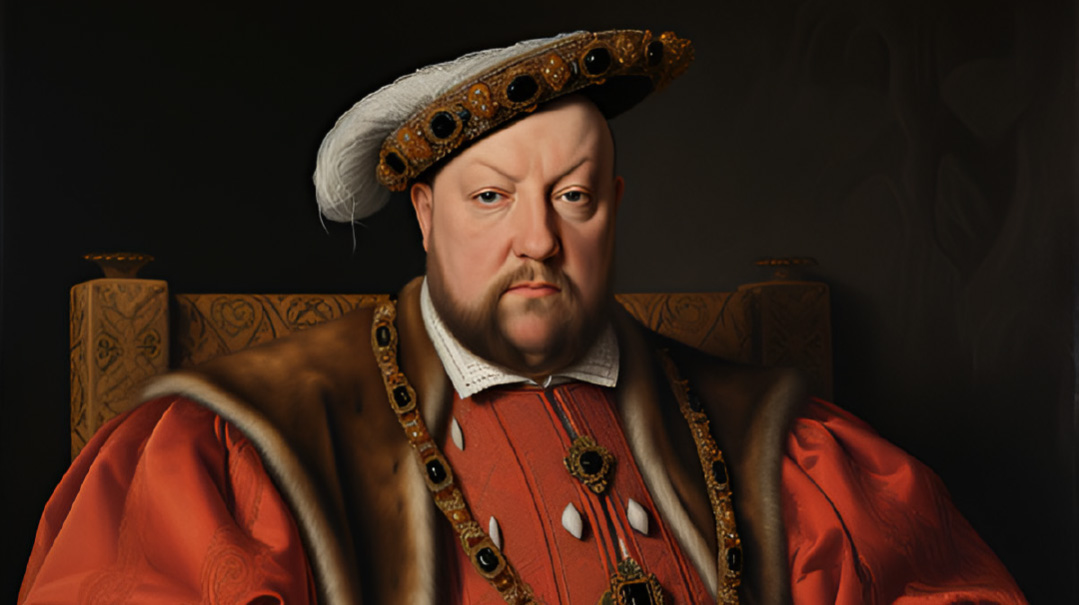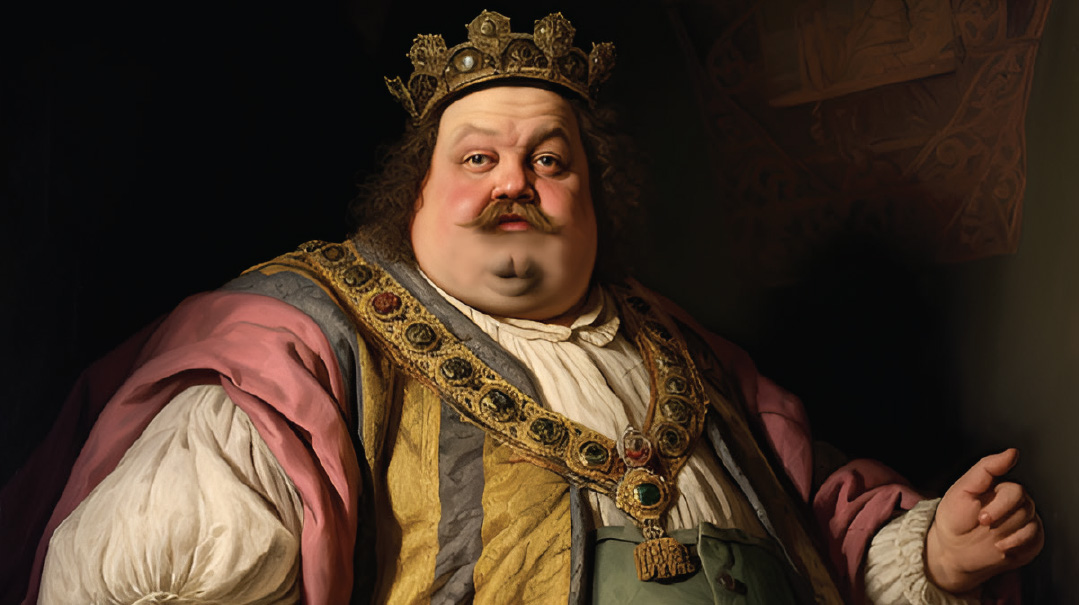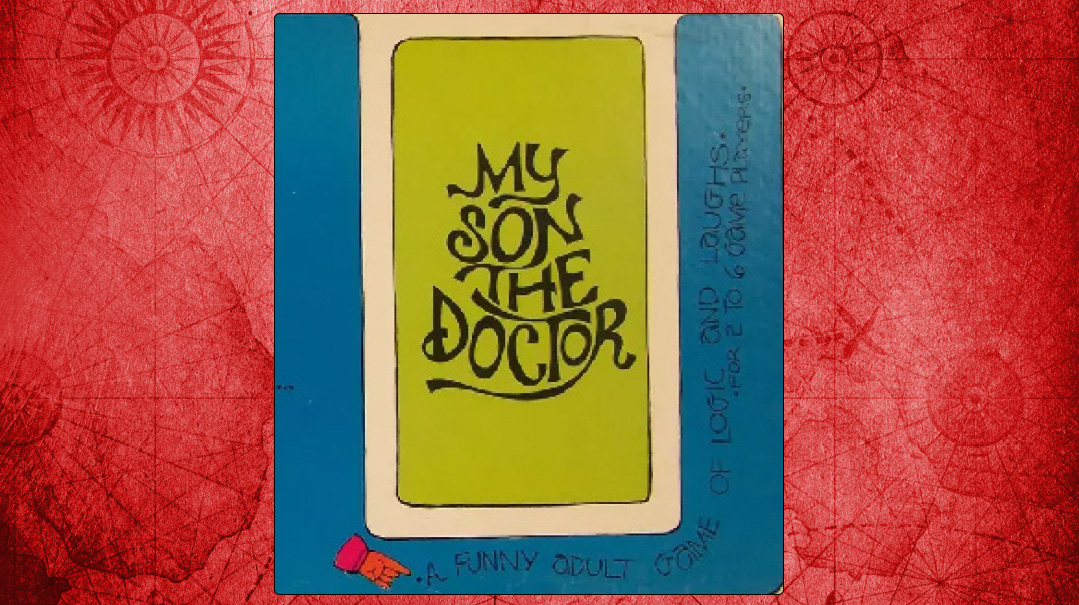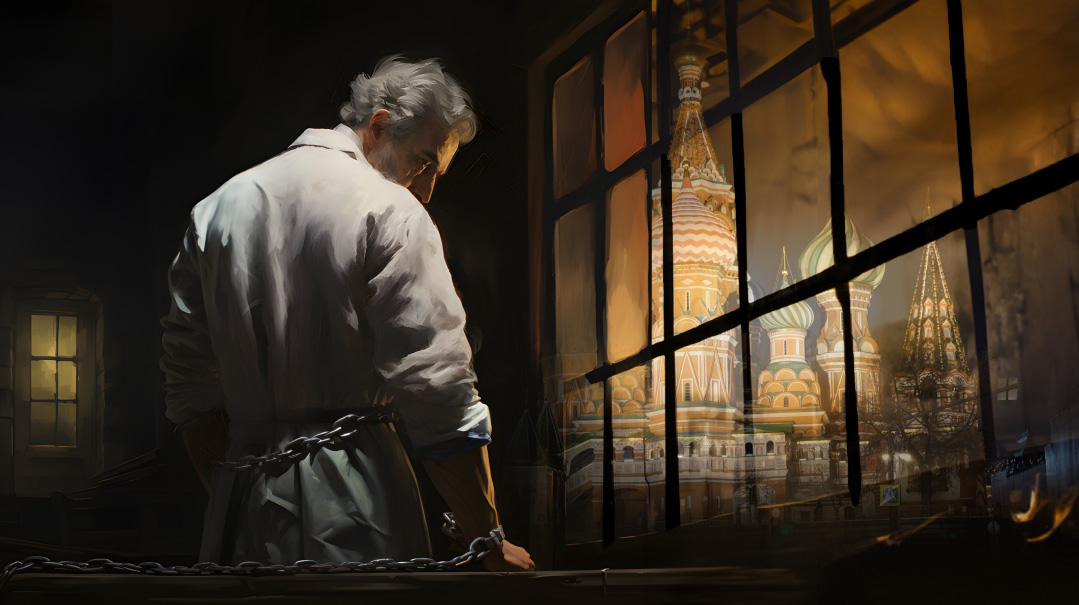Royal Treatment
| September 26, 2023How is that relevant to a Jewish view of medicine?

Based on a lecture by Rabbi Edward Reichman, MD
While Jews were banned from England for centuries after 1290, some of the most consequential Jewish interactions with the Crown occurred in those years — and came about through physicians. From royal sickness to high diplomacy and questions of organ donations, the intersection of monarchs and Jewish medicos has generated some fascinating chapters.
Like London buses, about which it’s said that you wait ages for one, and then three turn up at once, England’s history of Jewish medical men begins with not just one Jew, but with ten of them.
For hundreds of years after King Edward I expelled the country’s Jewish community in 1290, Jews weren’t officially allowed to enter England, but in the early 15th century an exception was made.
In the early 1400s, King Henry IV — Edward’s great-great-grandson — became very ill, and none of his physicians were able to cure him. Then, through the royal grapevine, Henry heard of a prominent doctor in Italy named Elia Sabato, who served as physician to a succession of popes and Italian nobles.
Elia agreed to come over and treat the ailing king, but with one peculiar proviso: that he be allowed to come “cum decem hominibus servientibus” — “with ten male servants” in Latin.
While Elia — whose full name for aliyah purposes was Elijah ben Shabbetai Be’er — may have puzzled his host with the request, as an observant Jew he simply wanted to have a minyan on hand.
Why wouldn’t nine have sufficed, with Elia himself as the minyan man? It’s likely that as he would probably be attending to the king a fair amount of time, he would leave his minyan without a minyan — hence the insistence on a full minyan.
Skeleton Service
Doctors or not, the 15th century was not a healthy time to live at England’s royal court.
For decades, the crown was contested in a series of battles between two noble houses, a struggle known as the Wars of the Roses. Ultimately, Henry IV’s grandson, King Henry VI, was deposed by the man who became King Edward IV. In turn, his young son, Edward V, reigned briefly before being imprisoned in the Tower of London, where he was killed, likely on the order of his uncle, who took the throne as Richard III.
It’s fair to say that Shakespeare was no fan of Richard. The Bard describes the king as a “foul bunch-back’d toad,” and “deformed, unfinish’d” among other pleasantries.
Richard’s defenders, on the other hand, maintained that Shakespeare just had it in in for the king and that based on royal portraits, he wasn’t deformed at all.
The debate could never be settled because Richard, having died in battle after two years on the throne, was buried in an unknown location. That changed in the early 2000s, when people began to do research to try to determine where Richard III would have been buried.
When they excavated a parking lot in the city of Leicester, very close to the battleground where he was purported to have died, they found the remnants of a church cemetery, and in an area designated for prominent people, they found a skeleton that showed signs of kyphoscoliosis, an abnormal curvature of the spine, which would be consistent with someone who is hunchback. The skull also showed signs of severe head trauma, consistent with the head wound that Richard was said to have suffered in battle.
Contextually, the remains seemed to be of King Richard III. The question was whether 21st-century science could make that identification certain.
The researchers turned to genealogy, specifically to a mitochondrial DNA test. What’s unique about mitochondrial DNA is that it is transmitted exclusively maternally. It can actually be transmitted to male children as well, but the male children do not transmit it further.
In 2012, researchers identified two living maternal descendants of King Richard III’s mother. They tested the skeleton’s mitochondrial DNA and found a near-perfect genetic match with the living relatives. That was a confirmation that the remains were indeed Richard’s, and so he was accorded an honorary reburial in Leicester Cathedral.

The remains of Richard III were discovered in a Leicester car park
Mitochondrial Mystery
So far, so Christian. How is that relevant to a Jewish view of medicine? The answer lies in the halachic status of this DNA test. If an exact mitochondrial DNA match links a present-day woman through unbroken matrilineal descent to a woman who was known to be Jewish, does that mean that the descendant is Jewish?
While genetic tests don’t meet the stringent standards of eidus required to permit an agunah on their own, they may arguably be considered sufficient circumstantial evidence (as a siman muvhak) to identify a deceased man and thereby prevent his wife from becoming an agunah.
When it comes to Jewish status, the question is whether mitochondrial identification is halachically sufficient on its own, or, at the least, as supplemental or corroborating evidence, in rendering someone Jewish. For example, olim from the former Soviet Union who want to marry in Israel have to prove their Jewishness. Many don’t have a rabbi who can confirm their Jewishness; they don’t have any graves that show their relatives, and there’s no documentation.
So today researchers are doing mitochondrial DNA testing on many thousands of Jews throughout the world. They have identified certain mutations of the DNA that seems to be found exclusively in the Jewish population.
The question of whether what proved Richard’s ancestry works for establishing yichus is a relatively new area of science and halachah, and is still unclear.
Levirate Loopholes
A few decades after Richard meets his bloody end at Bosworth Field, his successor-but-one, Henry VIII, gets involved in marriage machinations in which yibum, or levirate marriage, meets high diplomacy.
In British history, Henry VIII is notorious for his succession of wives, whom he summarily divorced or beheaded, depending on circumstances. His first wife was Catherine of Aragon, and the union came about because Henry’s father — King Henry VII — wanted to establish an alliance with Spain.
The rulers of the rising Catholic power were no ordinary king and queen; they were Ferdinand and Isabella, of Inquisition infamy.
In 1501, they married their daughter Catherine off to Henry VII’s heir apparent, Prince Arthur. The Crown Prince died shortly thereafter, but a mere tragedy couldn’t be allowed to derail the diplomacy.
King Henry had a creative idea: he suggested that his second son — later Henry VIII — marry his sister-in-law. The problem was that according to Biblical law, marrying one’s brother’s wife is forbidden, even after the brother’s death.
But as a student of the Bible, the wily king knew that there is one unique scenario where it’s not only permitted, but actually obligatory for the brother to marry his brother’s widow. That case is levirate marriage, better known as yibum.
In consultation with the pope, Henry VII invoked this convenient loophole, Henry VIII married Catherine, and peace reigned between England and Spain.
Confidential Consultations
That wasn’t the end of the story, though. Henry VIII and Catherine didn’t enjoy great shalom bayis, as she’d failed in the primary duty of a royal consort: providing a male heir. The king, who had his eye on Ann Boleyn — wife number two — looked for a way to dispense with his Spanish queen.
The well-known result of his schemes to annul the marriage was the English Reformation, involving a schism from the pope, who wouldn’t indulge Henry’s machinations.
Less well-known is the precise form that Henry’s scheming took. He effectively revisited the prohibition of eishes ach, of marrying one’s brother’s wife, and declared that his original marriage to Catherine was wrong. The argument was that the concept of levirate marriage was perhaps intended only for Jewish marriages, and applied to the case of Henry and Catherine, it had been invalid.
To pursue that brainwave, Henry naturally turned to Jewish sources. Given England’s Jew-free state, he became the second English king to turn to Italy for help. His agent was a classical scholar and royal tutor called Richard Croke, who set out for the Continent and consulted two rabbis, both of whom — in Renaissance fashion — were actually physicians as well. Rabbi Eliyahu Menachem Chalfan of Venice supported the case for annulment, but Rabbi Yaakov Mantino — who was consulted by Pope Clement VII on the issue — opposed the reasoning.
Frustrated in his quest to bend the pope to his will, Henry lashed out as only a medieval monarch could: he declared independence from Rome and created the Church of England, with himself its highest spiritual authority. That has led to the anomaly that persists to this day: The British monarch is also titular head of the church, making modern Britain an outlier as a liberal democracy where there is no separation of religion and state.
Parenthetically, in the course of this debate, with its high diplomatic stakes, Henry was told that the Jews have an entire Talmudic tractate dealing with levirate marriage. So as the story goes, Henry asked to procure a copy of the Talmud for his advisors to consult. He sent away to Daniel Bomberg, the Christian Hebraist and printer whose edition of the Talmud Bavli set the gold standard that endures to this day. Thus, from a Christian king’s attempt to invalidate his levirate marriage, London’s Westminster Abbey gained a priceless copy of the Talmud.
Poisonous Politics
The rise of Henry’s daughter, Elizabeth I, brought a Jewish doctor, Rodrigo Lopez into the heart of an English court. Lopez had converted to Christianity, although there’s some debate as to whether he was actually a converso, or only an outwardly practicing Christian.
In any case, Lopez faced jealousy from rivals at court, and, most likely because of his Jewish origins, he was falsely accused of attempting to poison the queen.
He was put on trial, held in the Tower of London, convicted and executed at Tyburn, which is now the site of Marble Arch, a London neighborhood home to a prestigious Orthodox shul.
Further adding to the mystery of Lopez’s Jewish roots, the physician’s last words before his execution were ambiguous. “I love the queen as much as I love our Lord,” he is reported to have said.
That reference to the Lord was likely to have meant the Christian savior, but there’s some suggestion that it referred to Lopez’s residual Jewish faith instead.
The unfortunate Jewish doctor was removed from the scene, but he may well have had a longer-lasting imprint on British culture than his high-powered enemies by way of another of Shakespeare’s plays: The Merchant of Venice, whose villain is Shylock, the Jew.
The question often arises that if indeed there were officially no Jews in England at the time that Shakespeare was writing, whom did he use as the template for a Jewish character? Some have suggested that in fact, the Queen’s physician Rodrigo Lopez was his model.
It’s true that Shylock was a moneylender, not a physician. But Jews were restricted to certain professions in this period of time, prominent among them the grubby business of money lending, and in addition, the far more prestigious role of doctor.

Illustration: Esaias van Hulsen
Pound of Flesh
In any case, The Merchant of Venice raises a unique question that is relevant to a contemporary debate about Jewish medical ethics. The play depicts Shylock lending money to Antonio, a Christian, against the collateral of Antonio’s flesh.
When Antonio defaults on his loan, Shylock comes to claim his due. “The pound of flesh, which I demand of him, is dearly bought; ’tis mine and I will have it. If you deny me, fie upon your law! There is no force in the decrees of Venice,” he exclaims.
The parallel of this grisly scene is to organ donation. Are you allowed to sell your body? Even before the organ donation debate, the whole concept of who owns your body was discussed in a fascinating essay by Rav Shlomo Yosef Zevin. In his work Ohr Halachah, he has an entire essay entitled Mishpat Shylock L’fi Hahalachah analyzing the character of Shylock and the concept of selling parts of your body or ownership of your body.
His conclusion is that Shakespeare’s fictional Jew was wrong. “It’s patently obvious to me from a halachic perspective that if Shylock came to the local beis din and claimed his pound of flesh from Antonio, that the beis din would not accede to that request. Neither the beis din nor Shylock had any right to slice a piece of flesh off a living being, either from themselves or from others.”
We are guardians of our bodies, Rav Zevin concludes, but we have no right of ownership.
By extension, can someone charge money for donating a kidney? Does he even own it? While a person can indeed claim compensation for the lost earnings and pain associated with the procedure, he would not be able to charge for the organ itself. Whatever his thespian virtues, Shylock had no leg to stand on, so to speak, when claiming Antonio’s arm.
Edward Reichman is a professor of emergency medicine at the Albert Einstein College of Medicine and holds the Rabbi Isaac and Bella Tendler Chair in Jewish Medical Ethics at Yeshiva College. He received his rabbinic ordination from the Rabbi Isaac Elchanan Theological Seminary. His book, The Anatomy of Jewish Law: A Fresh Dissection of the Relationship Between Medicine, Medical History and Rabbinic Literature, was recently published jointly by Koren, OU, and YU presses.
(Originally featured in Mishpacha, Issue 980)
Oops! We could not locate your form.







